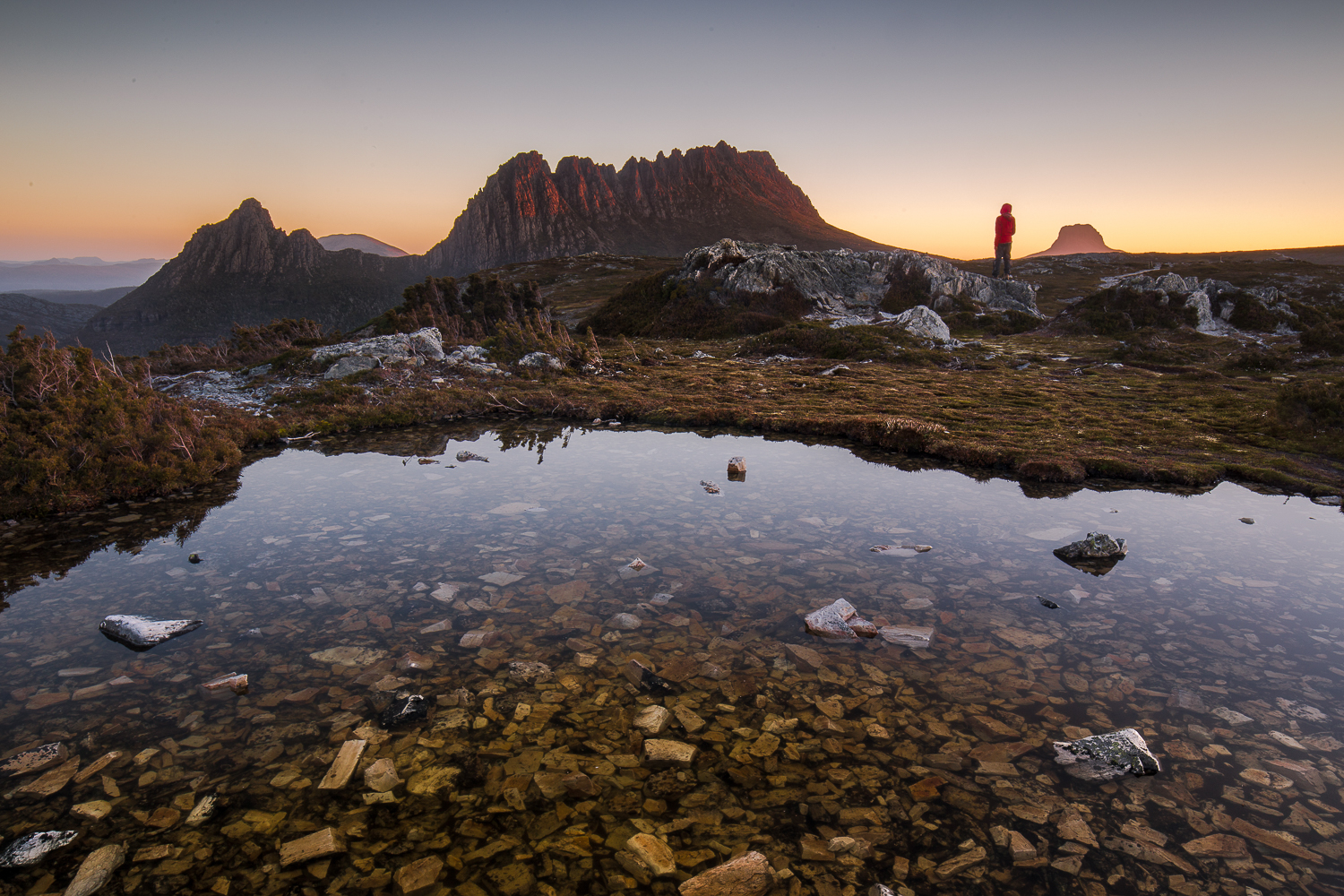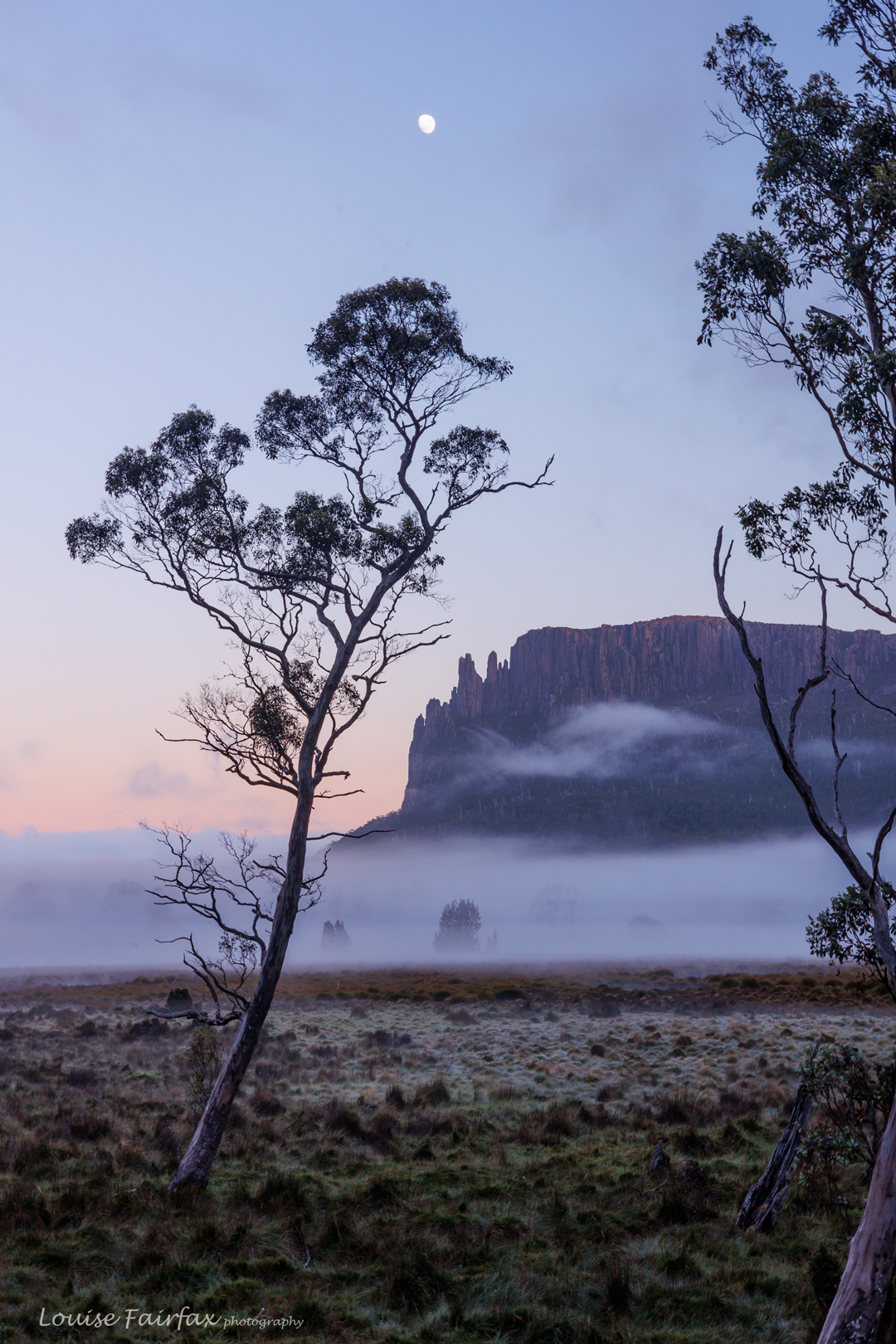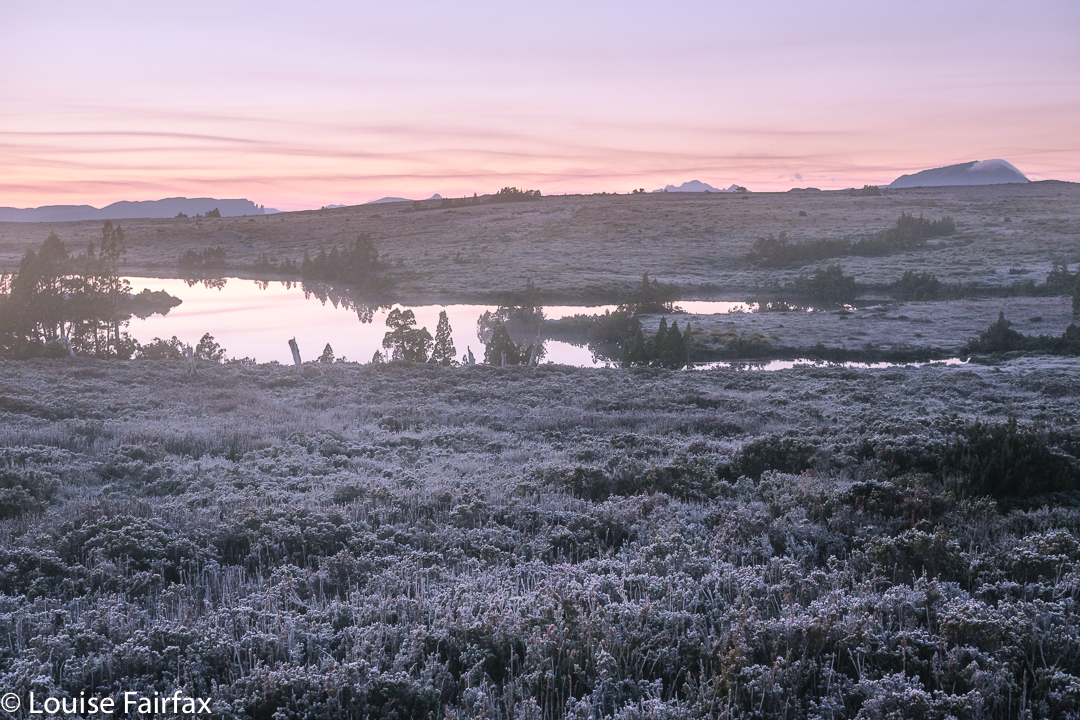This trip to Mts Ossa and Oakleigh was a trip in which I didn’t do anything I was supposed to do, but ended up doing wonderful alternatives, seeing some absolutely magnificent scenery (including the best wildflower display ever), and meeting heaps of incredibly nice people.
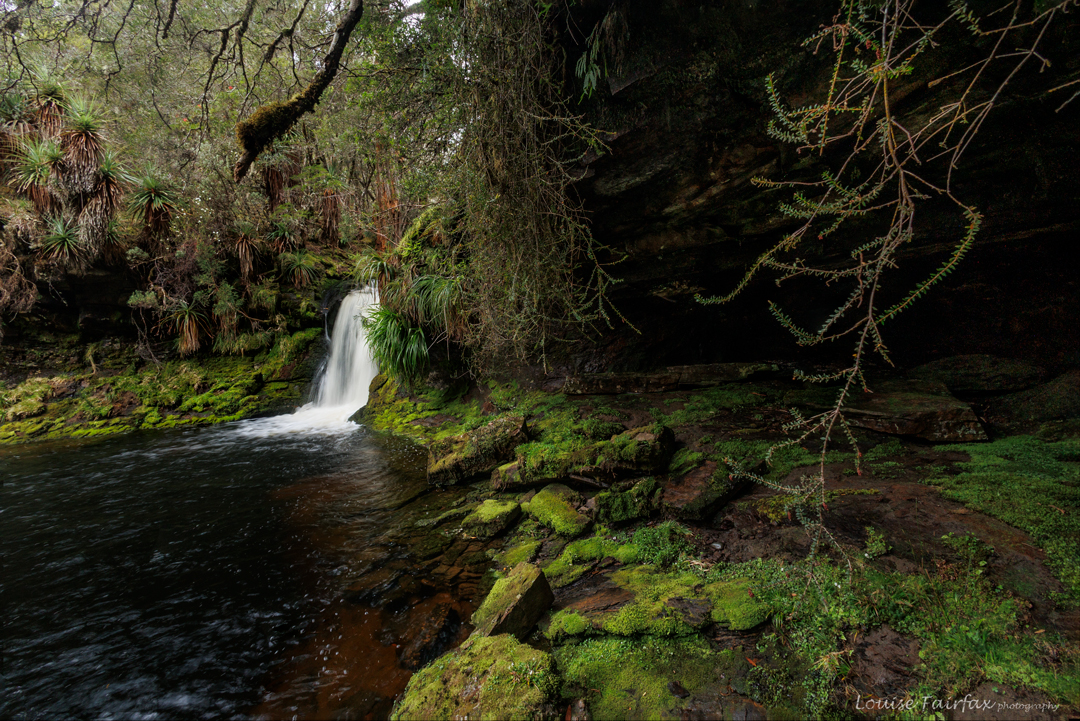
So, for starters, I left on the “wrong” day. Originally, we were to leave on the Monday, so I had booked my dog into the kennel, and even delivered her, before I got news we were now to leave on the Tuesday (due to bad weather coming). But my dog was already gone, and I had ants in my pants. I decided to just weather the weather and set off anyway, do my own thing for a day, and then meet the others. As it turned out, A and T had decided similarly, so three of us set out early.
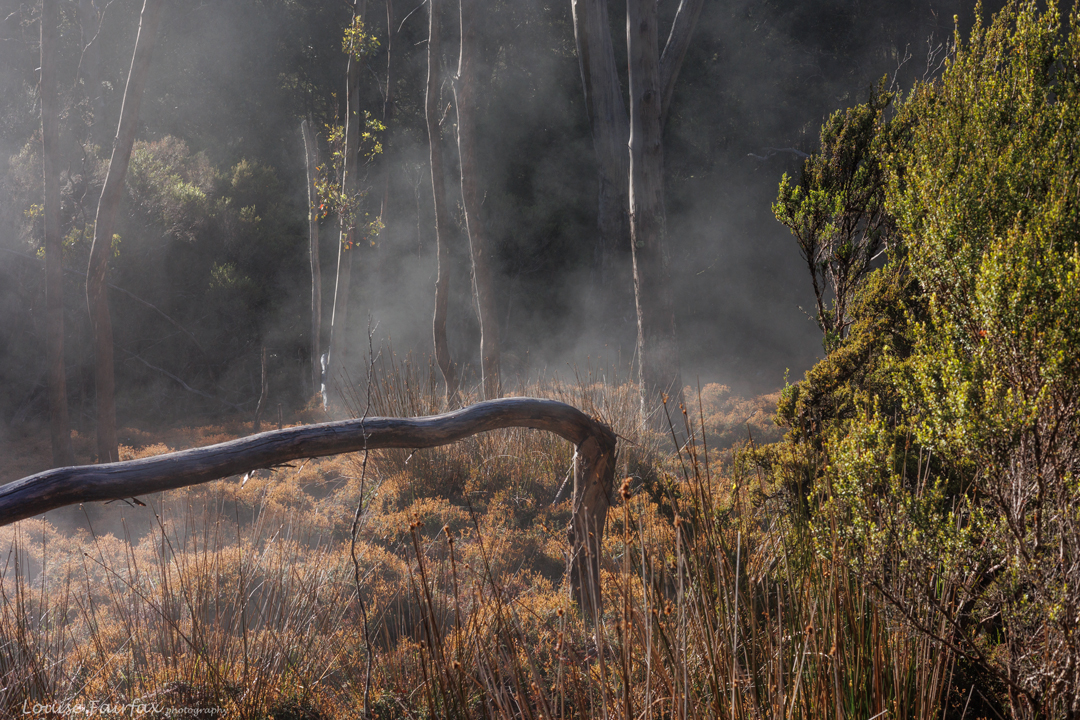
A and T elected to sleep in Pelion hut, reached after a few hours’ walking, but I unctuously declared that I was bushwalking, so would sleep in my tent, not in a hut. Tent pitched, the rainforest in all directions from the hut thoroughly explored, and several streams followed, I went down to the hut to be sociable. There were some terrific people in the hut, and I had lots of pleasant and interesting conversations until it was time to depart for bed, for which I had to wait for a break in the deluge.
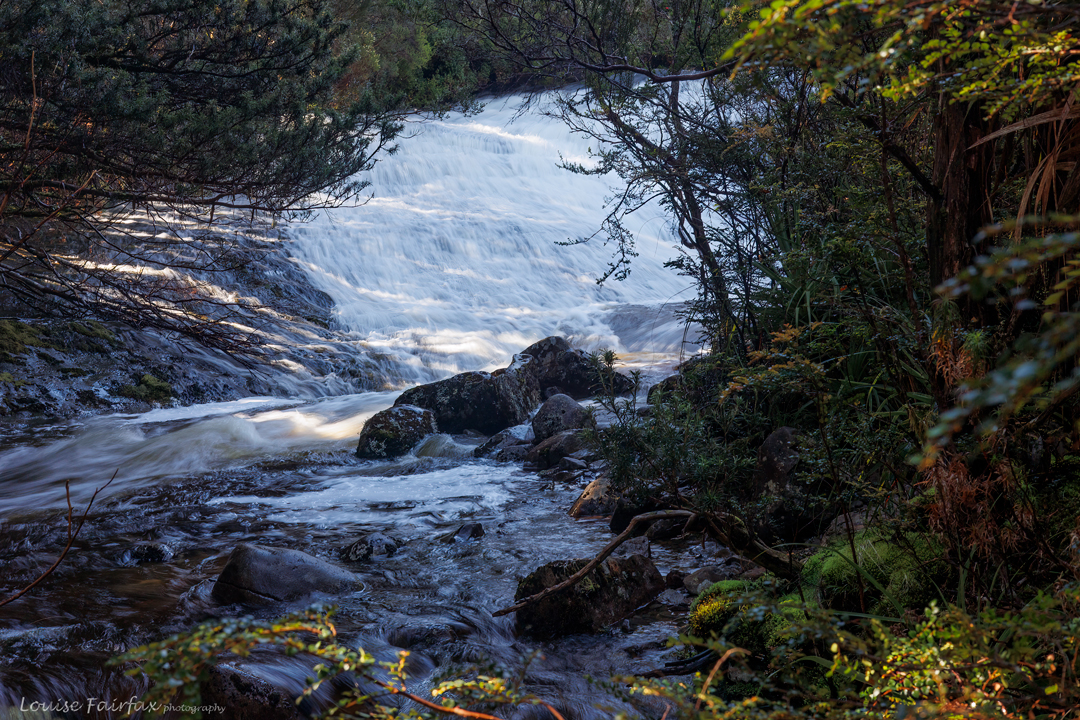
The phrase “bucketing down” gained a new meaning that evening, as I waited for a pause in the tumultuous downpour to run the fair distance to my little isolated tent. I have never heard rain quite so loud, never seen sheets of rain quite so solid. Squadrons formed on the verandah to enjoy (and many, to try to photograph) the wild display. Conversation while it was happening was impossible.
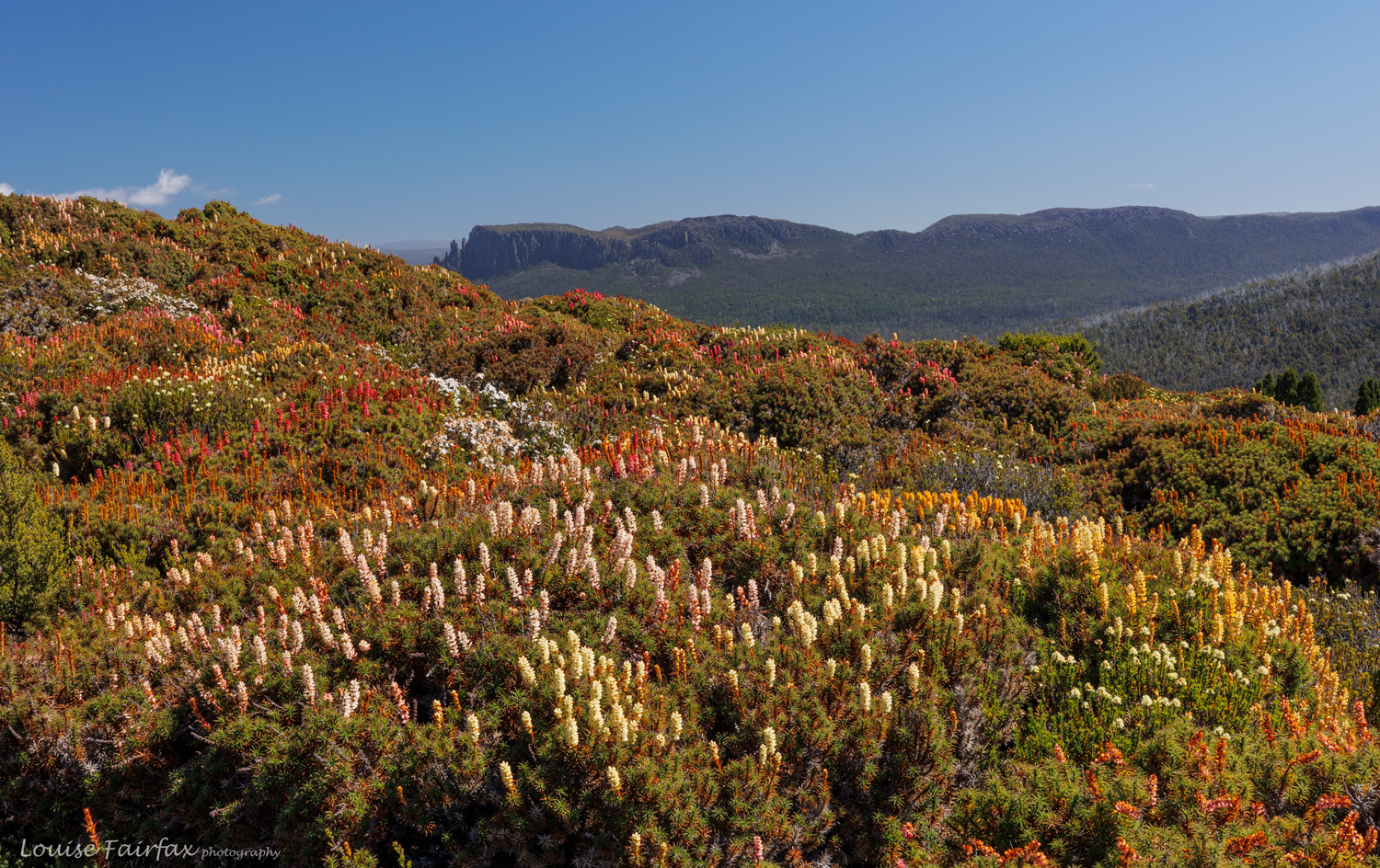
That night the mother of all storms rolled in. The thunder was roaring like a sick lion, the noise ricocheting from mountain wall to mountain wall in the audience of mountains surrounding us. The rain continued to flood the plain. I considered the fact that I was somewhat vulnerable lying there under trees should one of them get struck by the lightning that accompanied the noise, but, well, that is nature: threatening. I was aware of the danger, but also philosophical about its potential to harm. I have enormous respect for nature, so was not lying there like a fool thinking it could never affect me, or that I could somehow control it. What would be would be. Emanuel Kant would call the experience of us tenters “sublime” as we were taken into the realm of fear and our own vulnerability, yet emerged safely out the other side. Those in the hut barely noticed what they were in the middle of. Most had ear plugs in, and were also locked away from the flashing lights of electrical power. I am glad to have experienced nature in such a wild frenzy.
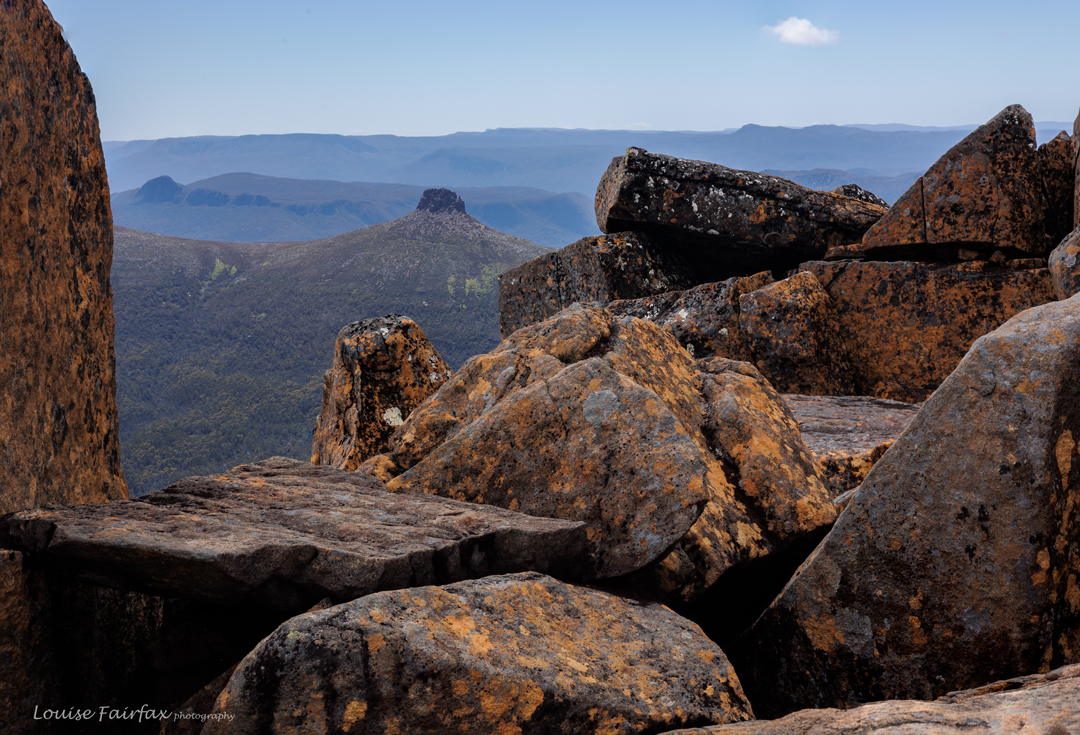
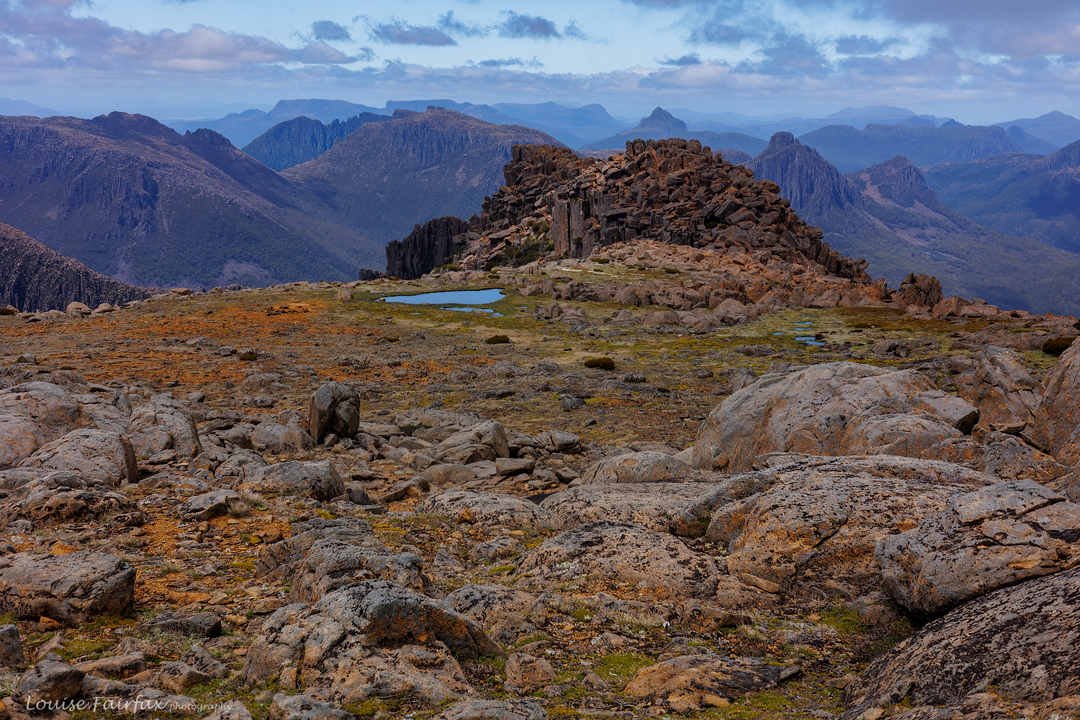
During the night, whilst listening to the drama, I noticed that water was falling on my face. I reached for my torch and discovered it was sopping. In mild panic I rescued my beloved camera and gps device and put them as high as I could, but was not confident, as my face was still being splashed. I did my best. My sleeping bag was more than moist. An hour later, I notice that my pillow – that is, all my emergency dry clothes, in a drysack – were now also wet. Somehow I fell asleep anyway.
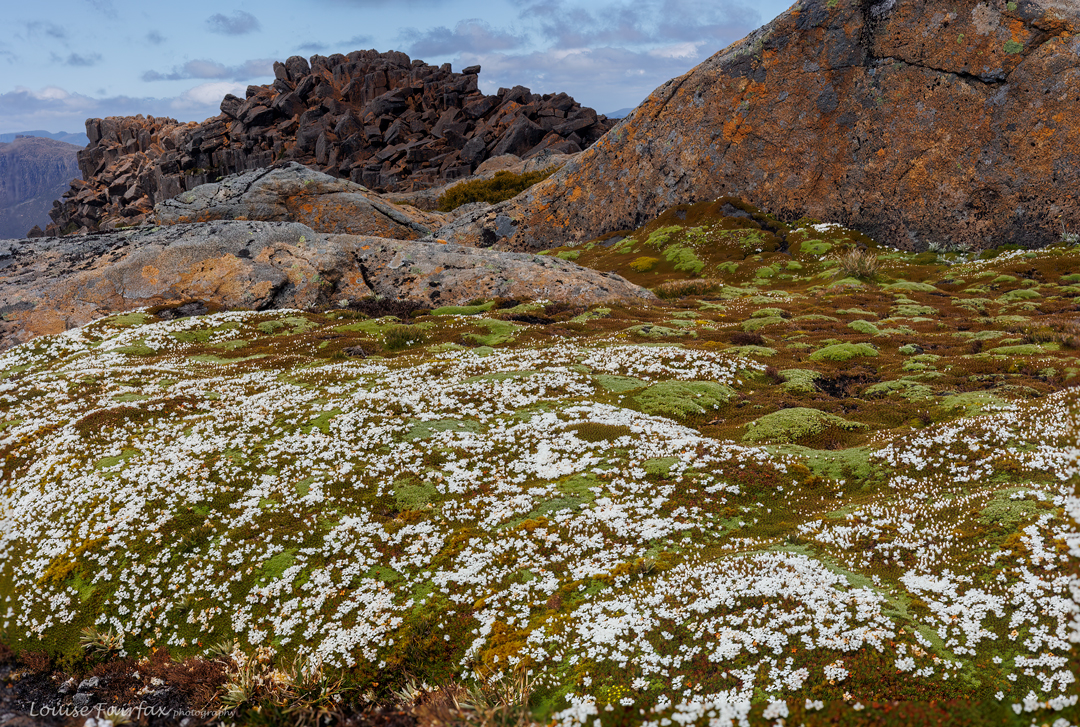
In the morning I awoke to the sight of a lake in my tent. Other plans I had made for this day to be spent at my will were now cancelled, as drying my stuff in the hut became my primary objective. First, however, I wanted to do something for exercise, so went up Mt Oakleigh in the rain (third time). The lush, mossy myrtle forest was magnificent in the mist. On the top rocks, the wind was blowing furiously and it was very cold. I had achieved my daily quota of exercise, so that was fine, and now I could try to dry things out to prevent hypothermia that night. High resolves cancelled, I moved into the hut. (No photos of Oakleigh; that might have killed my camera).
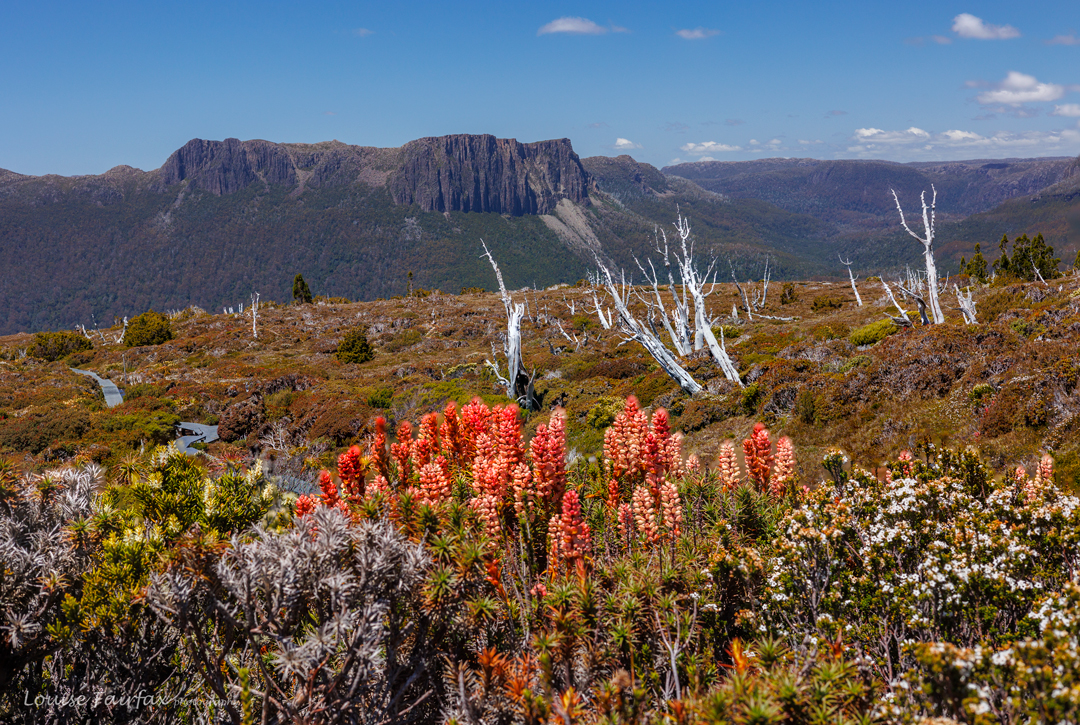
The next wave of Overland Trail walkers entered: another group of really nice people with new friends to be made. They were most solicitous about my gear, and many helped me turn and rearrange items to get them dry. We chatted around the heater meanwhile – hardly unpleasant. I was anxious to finish as quickly as possible, as these people were wet from the day as well, so we all needed to dry things. Amongst the smiling faces was a friend of my daughter’s from primary school in Canberra. It was fabulous to catch up with him and his family. I was really warmed to see so many children on the trail happily experiencing this initiation ceremony into distance bushwalking. They were happy, loved to tell me about the birds and other aspects of nature they had seen. I loved meeting them.
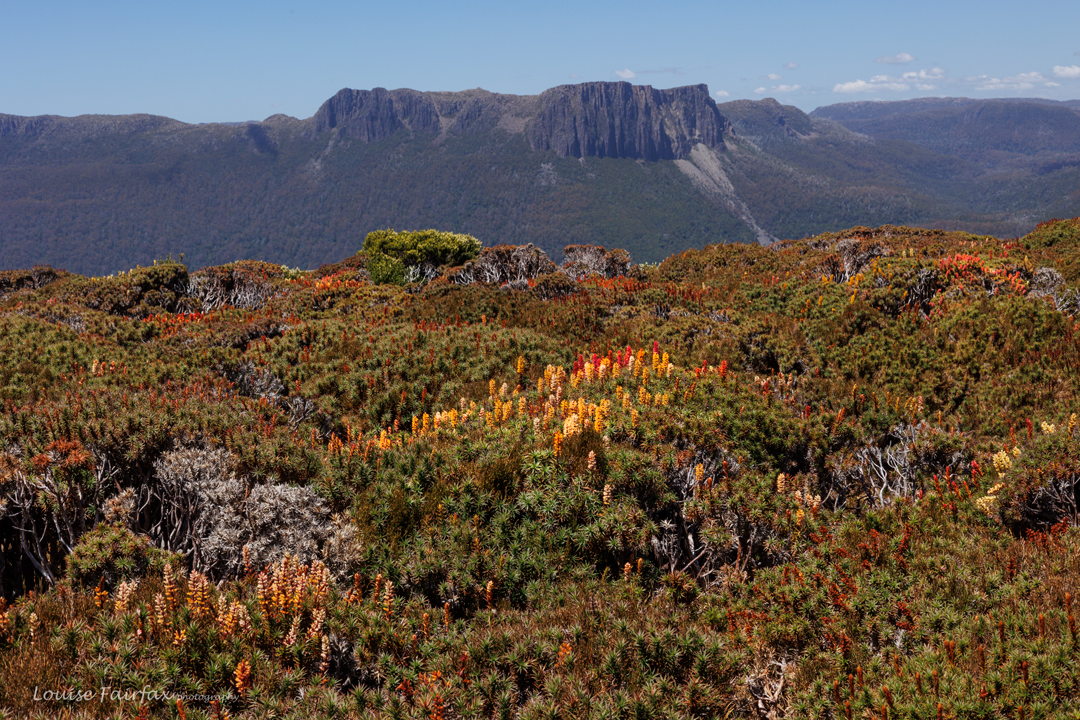
The people we should have met passed through, sopping and freezing. Not one of the three of us joined them in the planned further hour and a half’s walking. I needed to get dry before I could get wet again. My tent was still a swimming pool. Two days down. No previous plans fulfilled.
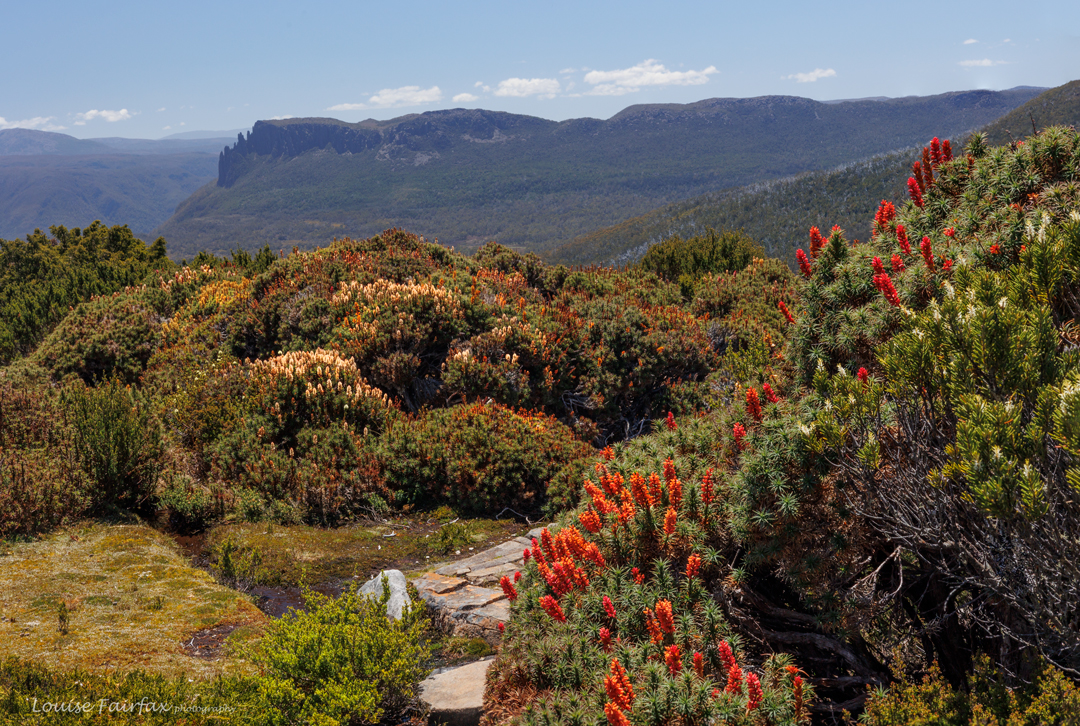
On day three, the others were climbing Proteus. My tent needed attention, and Proteus hadn’t thrilled me the first time I climbed, so I wasn’t going to cry over that lost opportunity. I scooped NINE cups of water out of the tent and hoped that by the time I got back from Mt Ossa, which I had decided to climb as a shorter alternative, it would be dry, and I could join the others for Pelion West.
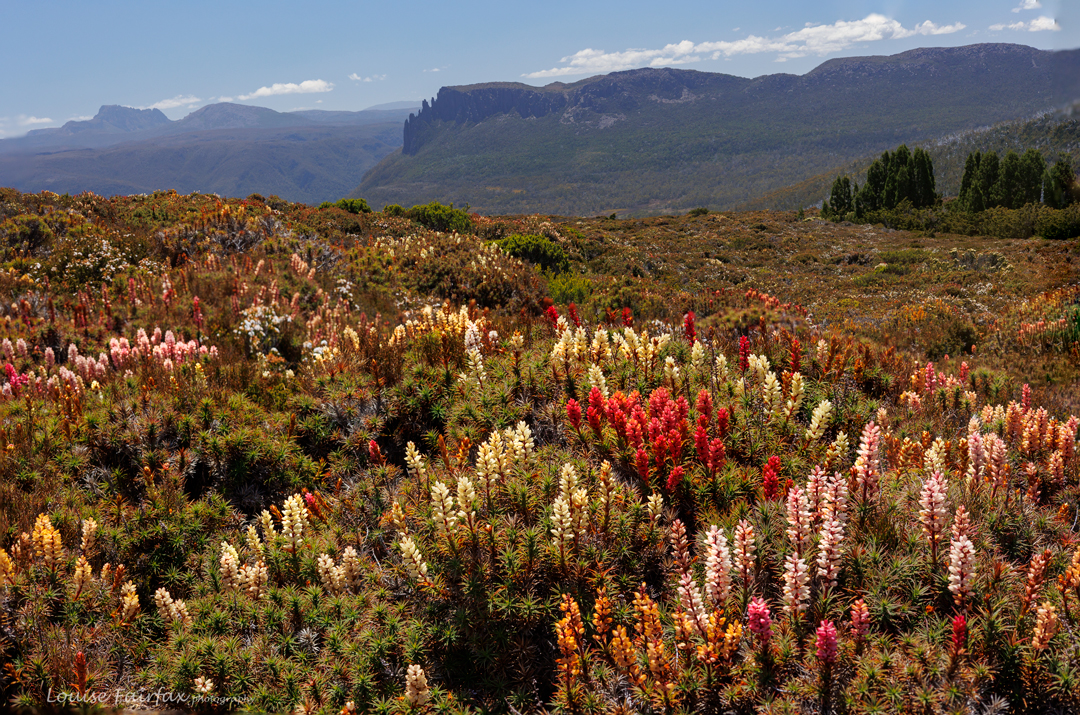
I have never seen such a varied wildflower display on Ossa. I have climbed it seven times now but never have I seen it quite this colourful. I was floating on the wave of its beauty. Striated emu wrens flitted from bushtop to bushtop, and other birds I couldn’t see (or identify by their chirps) called to me and teased me. Apart from their twinkles and tweets, the bush was deliciously silent. I played on the summit, and on anything I could find on the way down. I didn’t want to leave the flanks of this mountain today. Luckily for me, my new friends from the hut were climbing up as I came down, so every twenty or so paces, I got to have another chat with people whose faces I now knew. It was a very sociable descent. Back at the saddle, I was still reluctant to leave, so walked in the opposite direction to prolong the excursion into flower heaven. I got back to Pelion Hut for lunch after 4 pm, feeling just a little tired. I needed lunch, quickly followed by dinner. I was in no mood to carry out my plan of packing up and walking two hours to join the others. “I can do that early in the morning”, I said to myself.
-
That night (after a third wave of OT walkers had arrived and befriended me), all of us were … er … “blessed”?.. with the booming thunder of a snorer, trying to compete with the recent storm. His noise lasted much longer, with a regularity that was utterly unnerving. I did a Lazarus, and moved my bed to the kitchen. In the morning I observed that four others had done likewise, We could still hear him through the closed door, of course, but at least the sound as a little muted.
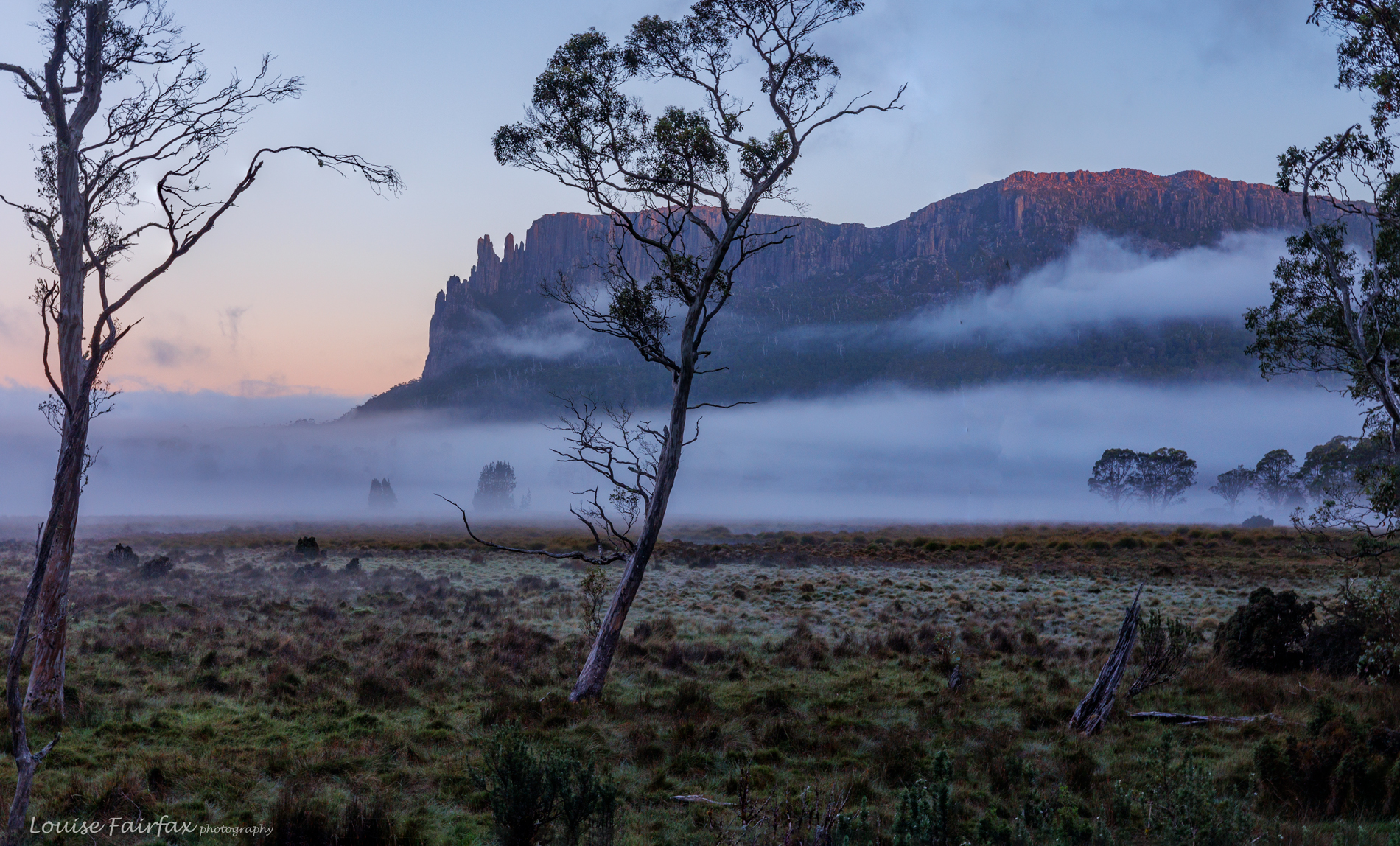
Dawn Oakleigh I was so lucky in the morning, as somebody bumped me, and I thus got to witness a superb dawn. The bumper later sheepishly apologised, but I pointed out that I would be forever grateful. If she hadn’t accidentally disturbed me, I would have missed that wonderful dawn. I had wanted to wake up for it, but was so tired after the many disturbances during the night that without her assistance, I would have missed it.
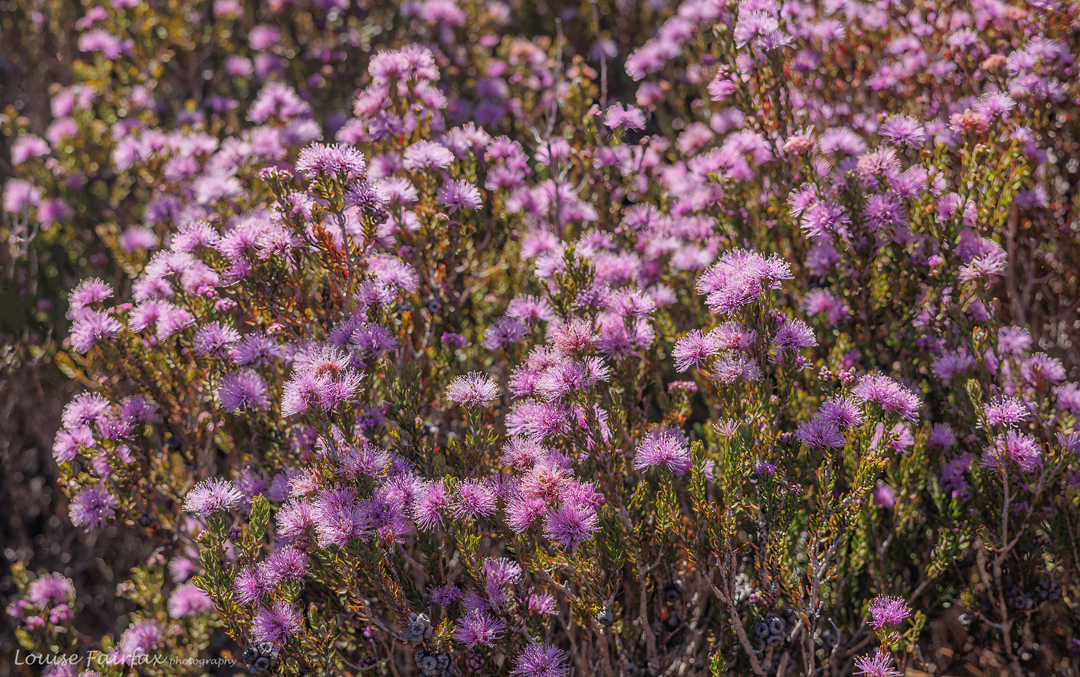
Melaleuca squamea had come into full profusion while I was watching rain. It likes the bog under Mt Pillinger. Exhausted from lack of sleep, and perhaps having picked up a bug, I started feeling sick. I set out to join the others, as planned, but decided that I really didn’t have such a long day in me. It was time to get out. I turned around and returned to the hut. Yet another action that was not according to the orginal plan. My dog, picked up a day early, was thrilled at the unexpected day’s reprieve from the kennel. (It’s a great kennel, but she loves being home with me.) She sang with delight at my appearance, almost dislocating the shoulder of the carer fetching her.
Cradle Area Waterfalls Days 3, 4
Day 3 dawned, as cloudless as the preceding two clear days, which meant another dusting of white ice on all the bushes, and pink hues on the horizon at dawn. As on the other two days, we would set out just before sunrise, which meant I ate my porridge at 6 a.m. to a view of dark silhouetted pencil pines against a backdrop of red glow. Sunrise itself – later (7 a.m.) – was a far more pastel affair.

Straight into the sun they go This day we would explore an area to the east, heading into the rising sun with its golden hues. The backside of Cradle was on our left. To our right as we made our way across the button grass plains, were glimpses of Mts Oakleigh, Pelion East, Ossa, Paddys Nut, Thetis and Pelion West, with others playing more insignificant roles. Barn and Inglis were behind us if we looked back. Emmett was a lump between us and Cradle. These are all my old friends, and just as seeing the spine of a favourite book helps you to recapture the feeling of reading it, so seeing these old friends sparks many happy memories of other trips.
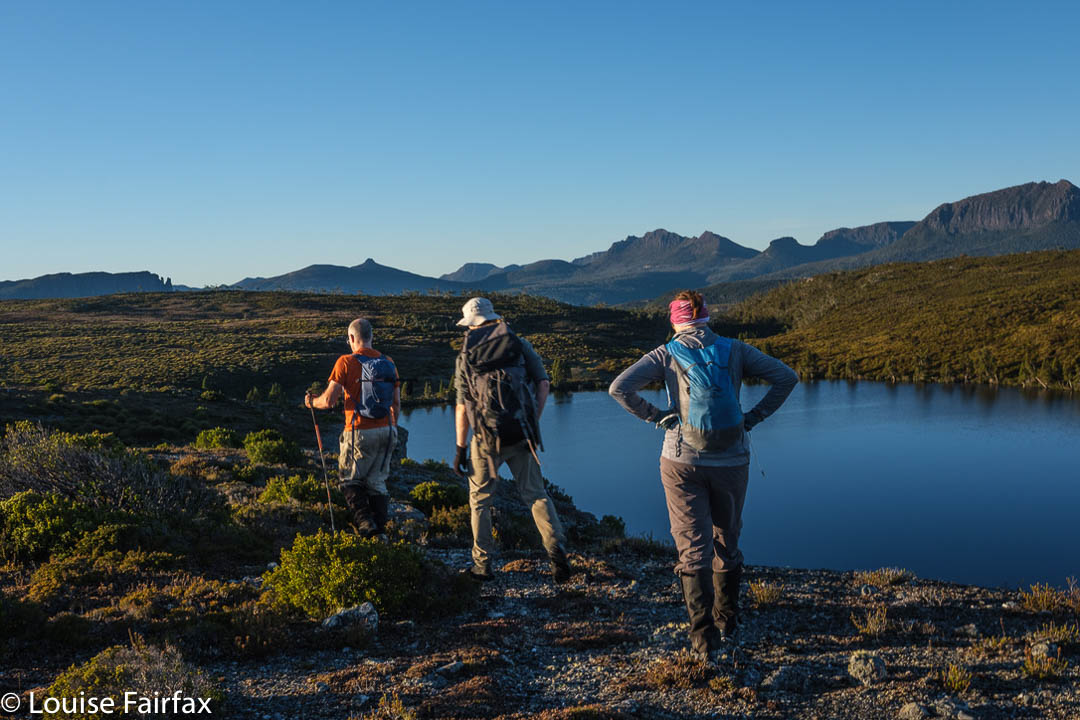
Around the top of Lake Agnew we go Our first goal that had any significance other than “broad expanse of alpine scrub dotted with pencil pines and tarns” was Lake Agnew. So large was the seemingly featureless route in between us and this lake that, when I thought I was going to be doing this solo, I had marked a waypoint on my map, just to have something to head for. We said “Hello” to my waypoint en passant. I hadn’t any information on Agnew other than that people who crossed it on its outlet stream side had trouble finding a good spot to do so. Adrian and Caedence were all for passing it on the uphill side, which gave us two streams to cross, but as they were more uphill, they were merely passages of water to jump over. Meanwhile, we had the added bonus of walking along dramatic cliff tops overlooking the lake, with views later to Lake McRae further north. I loved those cliffs.
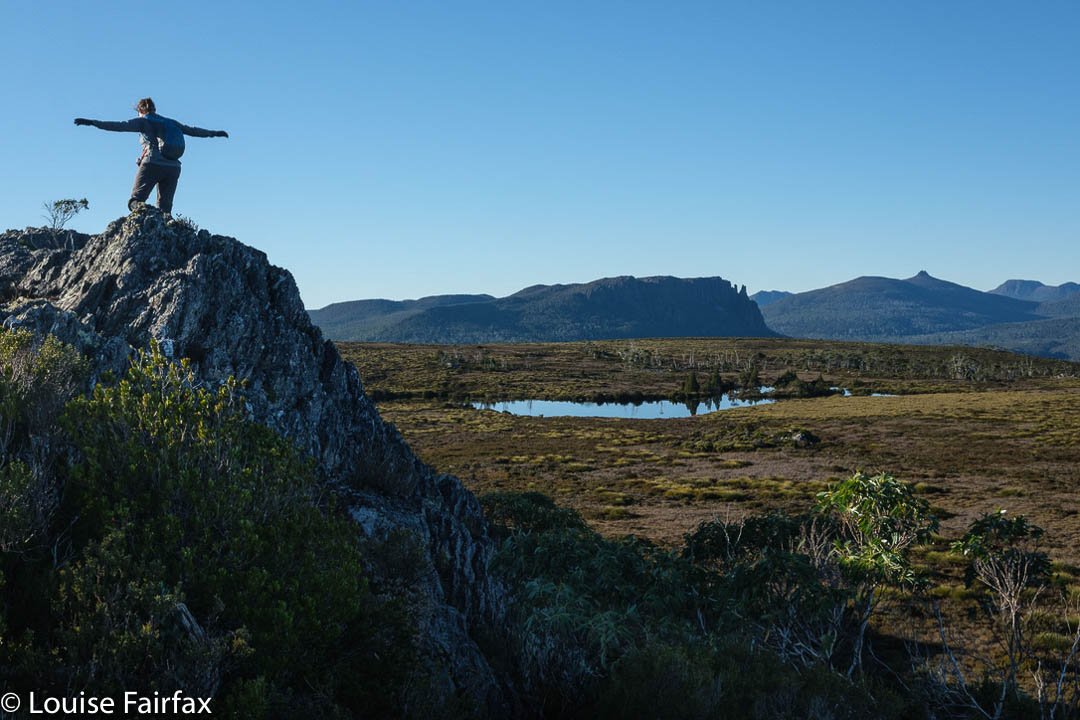
Leandra having fun on Spine Ridge We had to drop down from the cliffs in order to cross the first stream, but that was also problem free. Up we headed to a feature I have called Spine Ridge for obvious reasons. Here the view was so fantastic we stopped to have a snack and just enjoy the vista for a short while.
Now, Caedence gets a little antsy when he sniffs that he is near a waterfall, and so urged us to take a straight line for the first falls of the day, labelled Razorback on the map. He felt that would be the fastest way there. I did mention a good route from the hut to the falls below (not these, but nearby), but my arguments fell on deaf ears. I also pointed out that the shortest route is not always the fastest. What do I say? I merely advise you to listen to what I said, and don’t take the “short cut” unless you feel like a really engaging bush bash where the forest will throw everything it can at you to retard your progress. Of course, we didn’t know that at the time, and Caedence was so eager to at last see water falling we all took the hypotenuse … and lost a bit of time. The day was still long. It was only 10.10.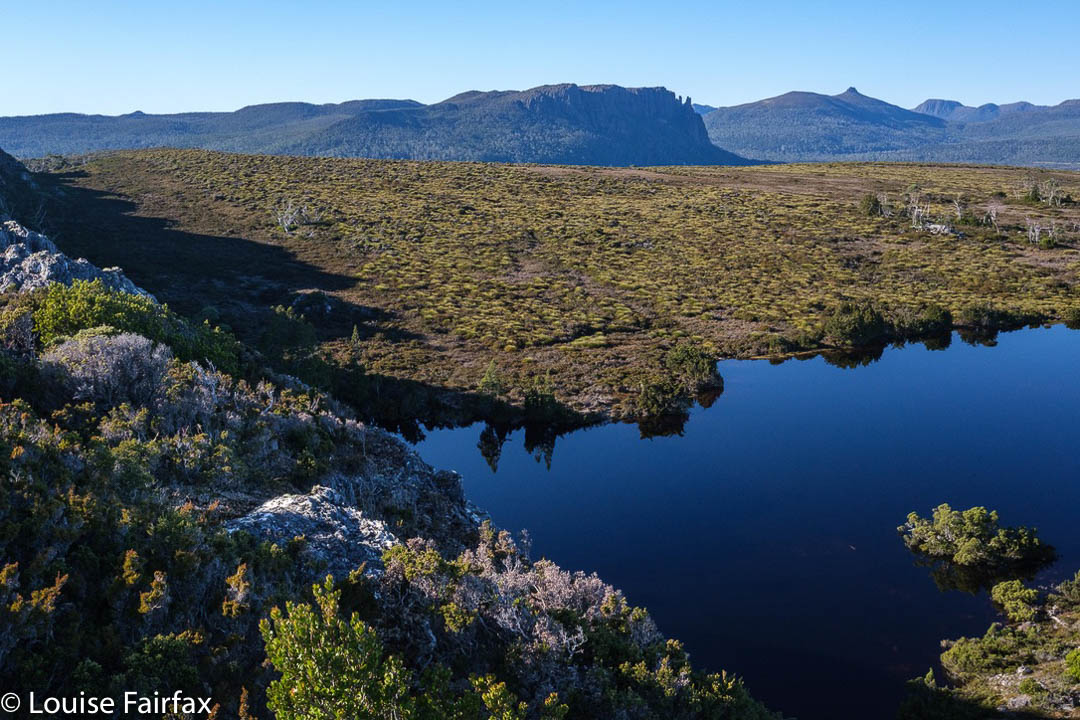
Mt Oakleigh, Pelion East and more (+ nameless tarn) from Spine Ridge These falls are actually interesting, as, although they are labelled Razorback on the map, they do not match Stephen Spurling’s photo of falls he calls Razor Back.
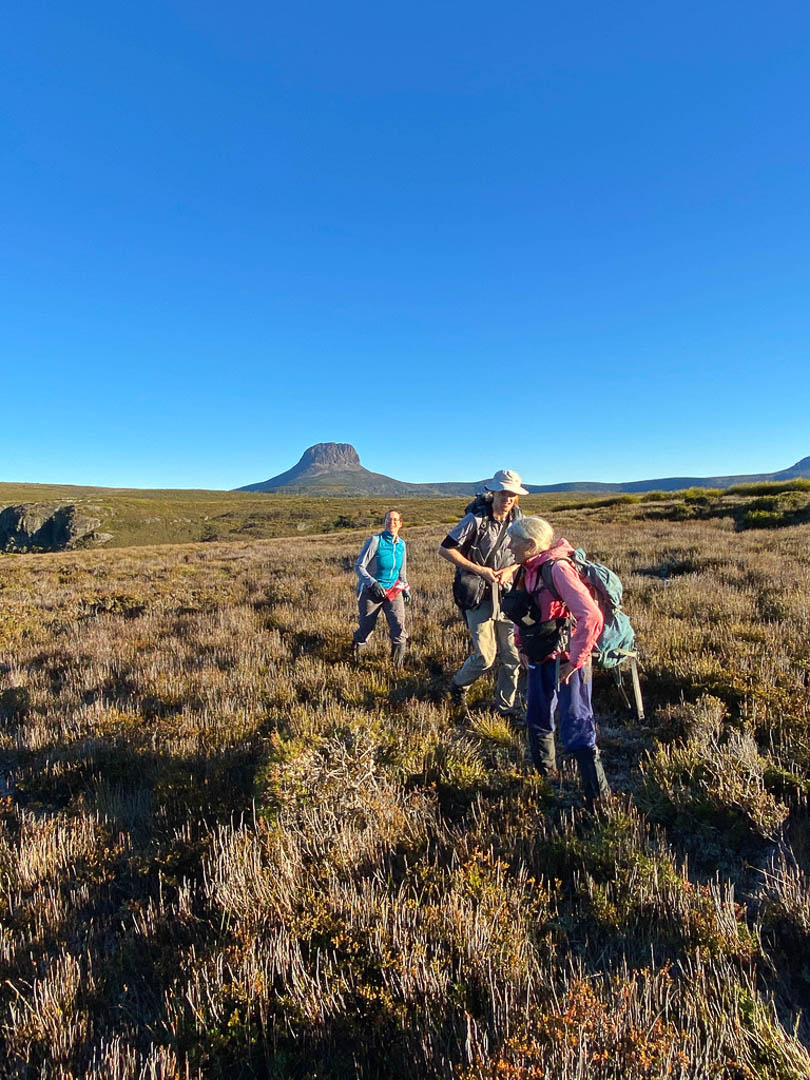
Scene along the way. Thanks Adrian. I really do think this was that pink jacket’s very last long trip. It now has so many holes it no longer keeps me warm. In case you don’t know your early Tasmanian explorer and photographic history, Stephen Spurling III, 1876-1962, stands out as a glorious photographer of his era. His photos form the earliest extensive record of the Cradle Mountain and Western Tiers area. (He was quite an explorer, and now that we have seen some of the falls he shot, I can add he was an excellent bushman. The falls are not in easy terrain.) He took the first known shots of the Gordon and Franklin Rivers, as well as the earliest known aerial photos in Tasmania from 1919. Although many of his photos remain, some are unlabelled, or unclearly labelled, so we are left to guess some things, and join some of the dots. It seems to us, however, that the waterfall labelled Razorback on the map (the first ones we visited) were not the ones labelled Razor Back in his photo.
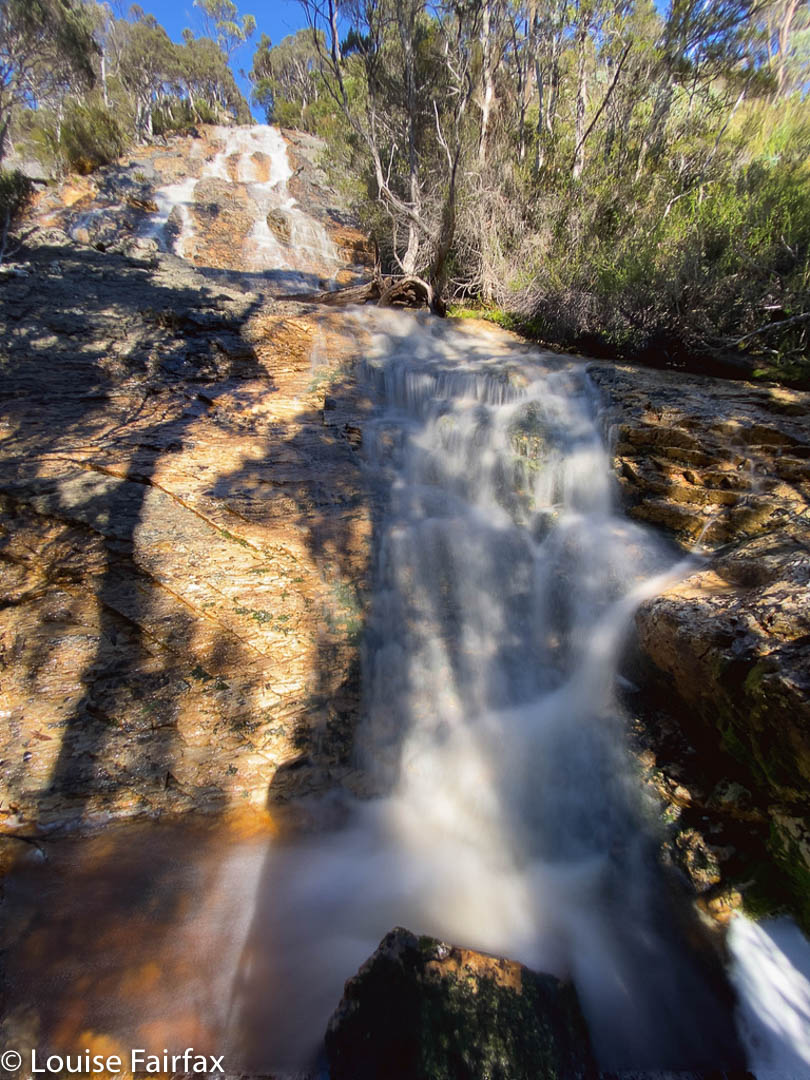
Myra labelled Razorback Falls on the map The others believe the first waterfall we visited (above here), labelled as indicated in that last sentence, was therefore Myra Falls, not Razorback, and that the second falls we visited, near the old mine downstream, match the photo labelled “Razor Back”, and hence my caption of the first waterfall as “Myra labelled Razorback on the map”. The second waterfall, which we feel strongly is his one labelled Razor Back, is merely a blue, unlabelled line on the map. I have labelled it “Real Razorback Falls”. I guess there was a transcription error by a clerk in an office somewhere when maps were being made. It is not the first and will not be the last such error.
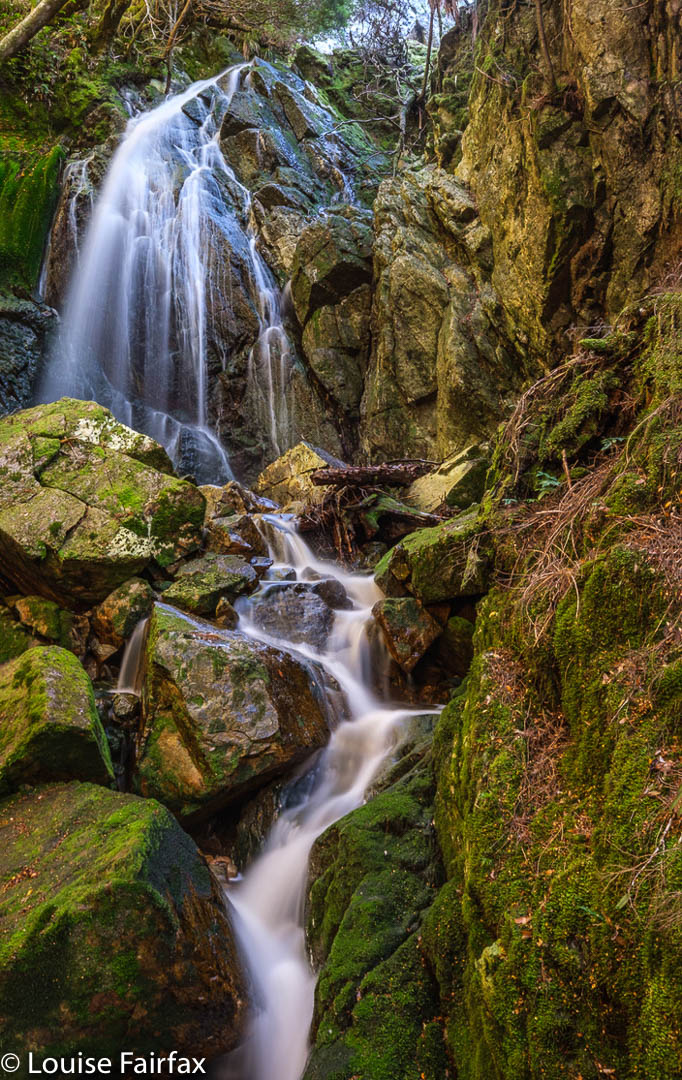
Real Razorback Falls, as judged by Spurling’s photos rather than map labels Having had a big bushfight to get to these falls, we were not entirely lusting after more of the same to reach the next. Luckily, it wasn’t as bad, and we knew the next falls would lie in rainforest. We longed for mossy green after that dry, thick scrub, and we got it. My first shot was taken at 11.09; my last around 11,30, so it wasn’t quite lunchtime, but breakfast had been early, and this place was very beautiful (also having many fungi), so we sat by the cool stream and had lunch before climbing up to the high land above and Hydrographers Hut that we wanted to see.
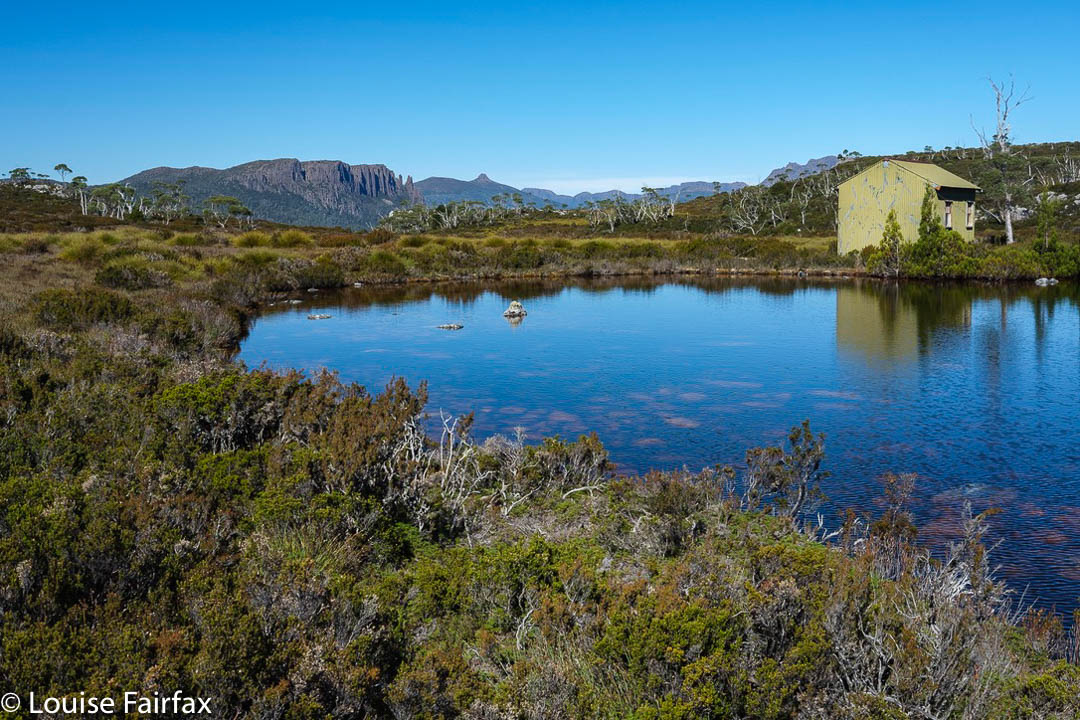
Hydrographers Hut. Sorry for the lack of apostrophe. That is official nomenclature. Although still a student, poor Caedence also has this awful thing called a job, and, worse still, the pay for Anzac day was going to be just what he needed to amass some savings, so he left us at Hydrographers Hut to make a dash for the tent and an early depitch and exit. But, it was a truly magnificent day, and we remaining three had no pressing commitments for Anzac Day (the morrow), so we chose to enjoy the lake around the hut and the scenery on the way back at a more leisurely pace. We had thought of moving the tents nearer to the cars, but decided we would stay put another night in the end. Adrian had another swim. Louise stayed dirty.
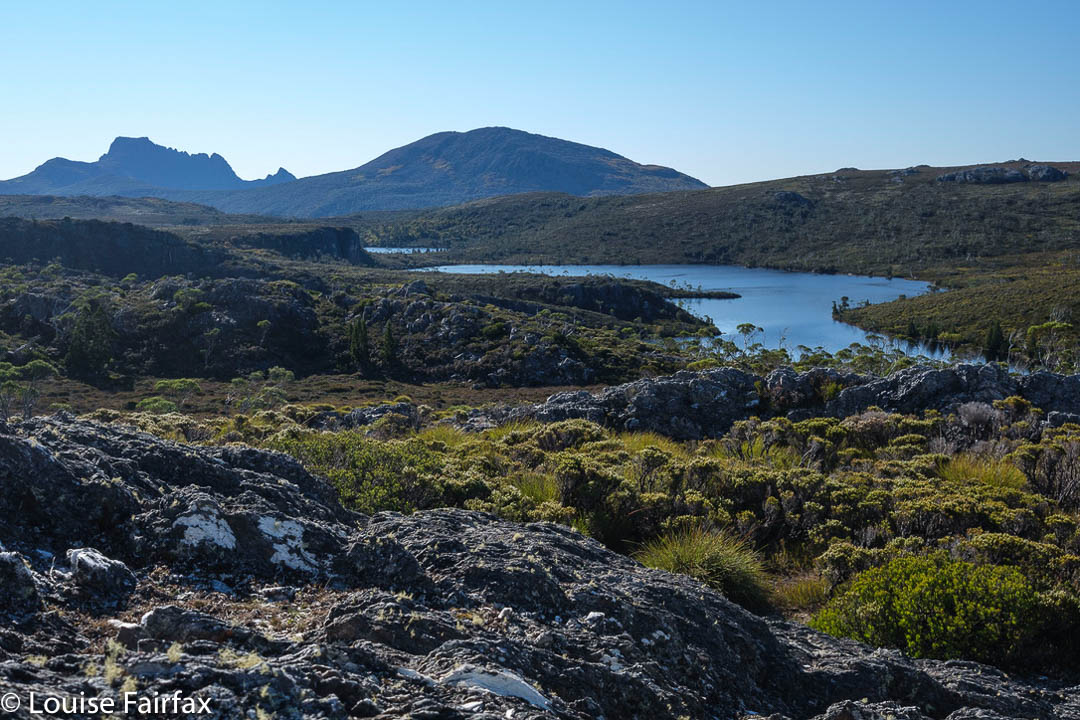
Afternoon light. Looking towards Lake McRae (and Cradle and Emmett). For the third night in a row, there were no clouds, and ice decked the ground and our tents in the morning. We enjoy our early departures, but on this day it was a mild problem in that the tents were absolutely sopping with the condensation from our moist breath during the night. Drying them out would take hours and a massive effort, so we popped the weighty wet lumps in our packs and just put up with the extra kilo or so of water.
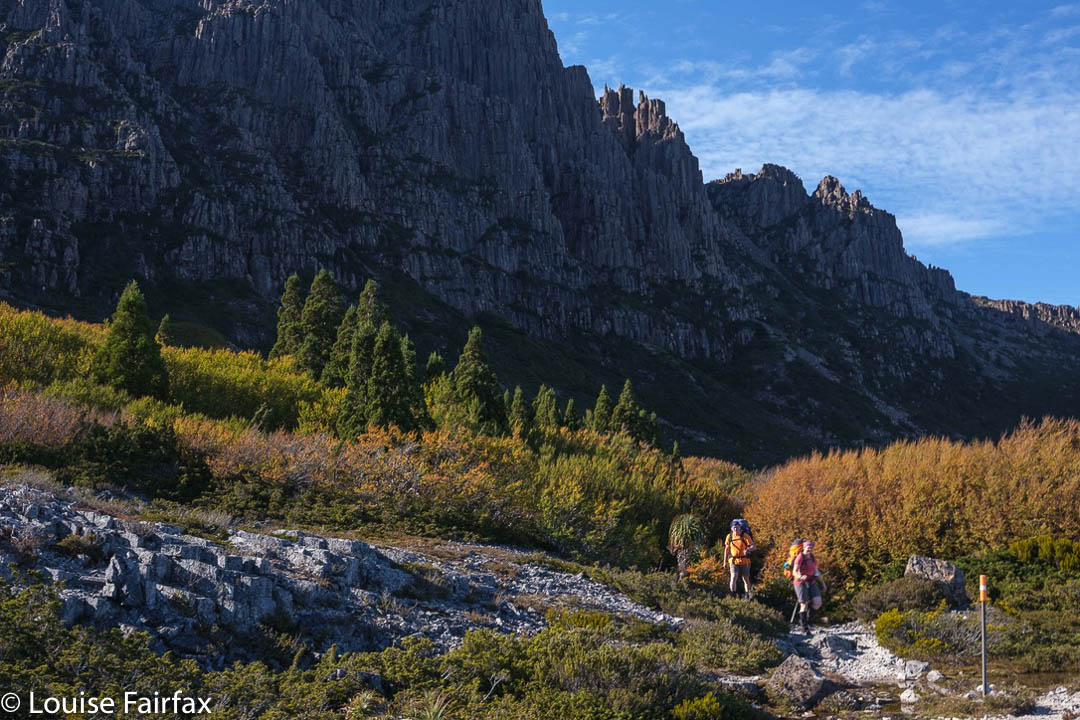
Fagus display as we head back north As ever, it felt weird to land back in the area of masses of people on the trails once we got near to Cradle. We stopped at Marions to marvel at the Overlanders, sweating and grumpy of face, dressed in black to make them hotter than necessary. It was only maybe the fifth group that actually said “Hello” to us and looked a bit cheerful. I hope their enjoyment of the wilderness increased as they went along.
For Days 1 and 2, see http://www.natureloverswalks.com/cradle-area-waterfalls-days-1-2/
Oakleigh 2018 Jan
Mt Oakleigh. Jan 2018
A trip I was going to be on was cancelled due to bad weather, so I determined this was the weekend I would sleep on Mt Oakleigh. It would rain on my way up, but, hopefully, I’d get good views next morning. I checked the wind forecast, which was fine, and, just on the off-chance, dashed off a message to one of my IG friends, who said she’d like to come. An adventure was on.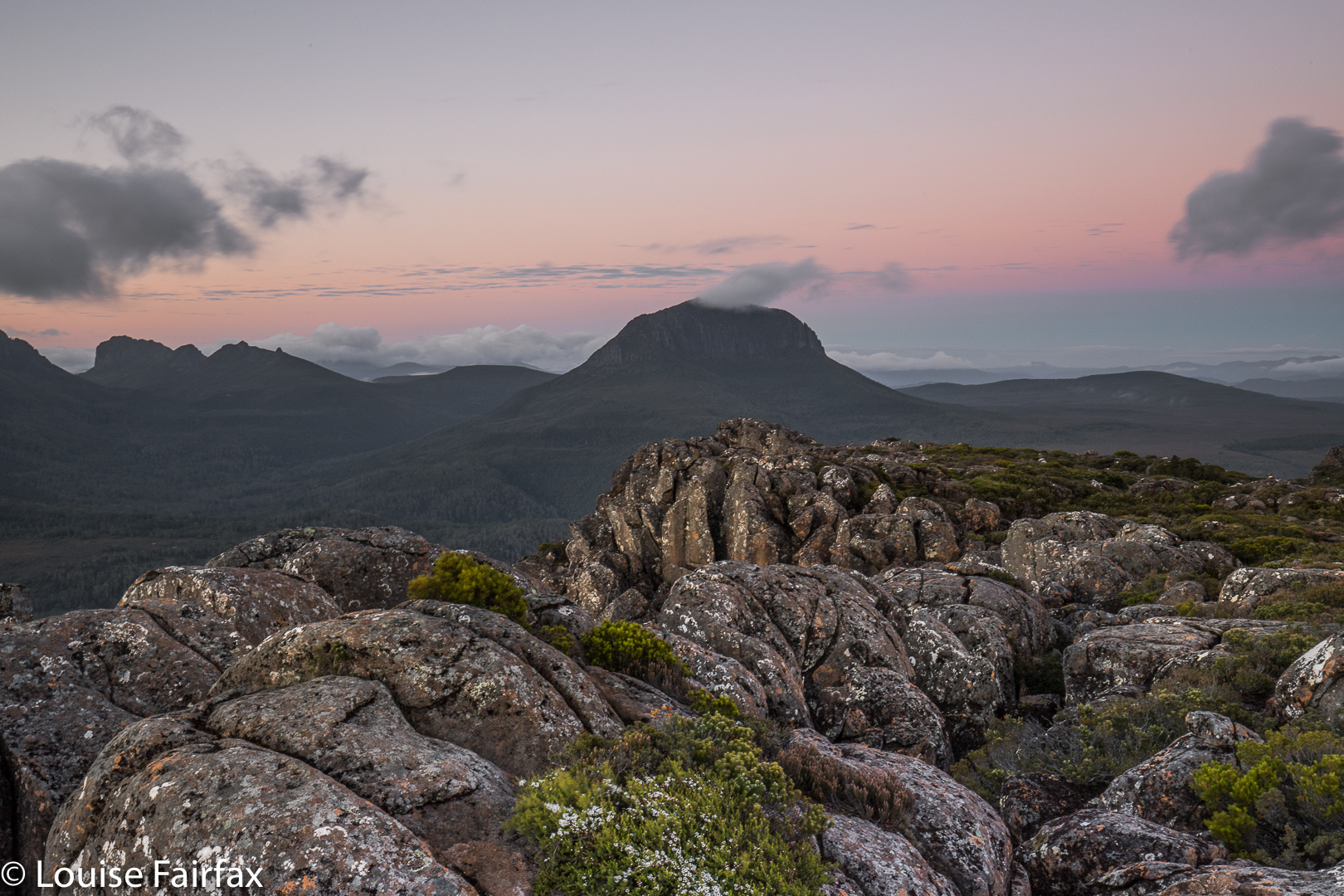 I have done a bit of waterfall bagging with this friend, and we have fun together. I realised as we progressed along our way on Saturday, however, that this was her first overnighter with a tent, that she was feeling a bit nervous, and that perhaps climbing a mountain on your first attempt at sleeping in the wild was maybe a bit too wild. I offered her the alternative that if she was too worried about the conditions up there (they didn’t look at all friendly from below), then I’d go with her to New Pelion Hut, and then climb the mountain alone. No, no. She wanted to come. On we continued. It was nice that she trusted me to keep her alive, as a wild mountain is a rather confronting beast when you meet it face to face. Secretly, I was worried about her lack of equipment in the face of the cold weather up there, but I was also pretty sure I could help her through a crisis. Her lycra tights were not keeping her at all warm. She had no beanie, and no spare shoes, but she did have dry socks for overnight, and a decent sleeping bag. My tent takes two at a pinch, so if she was freezing, I could invite her into mine to warm up.
I have done a bit of waterfall bagging with this friend, and we have fun together. I realised as we progressed along our way on Saturday, however, that this was her first overnighter with a tent, that she was feeling a bit nervous, and that perhaps climbing a mountain on your first attempt at sleeping in the wild was maybe a bit too wild. I offered her the alternative that if she was too worried about the conditions up there (they didn’t look at all friendly from below), then I’d go with her to New Pelion Hut, and then climb the mountain alone. No, no. She wanted to come. On we continued. It was nice that she trusted me to keep her alive, as a wild mountain is a rather confronting beast when you meet it face to face. Secretly, I was worried about her lack of equipment in the face of the cold weather up there, but I was also pretty sure I could help her through a crisis. Her lycra tights were not keeping her at all warm. She had no beanie, and no spare shoes, but she did have dry socks for overnight, and a decent sleeping bag. My tent takes two at a pinch, so if she was freezing, I could invite her into mine to warm up.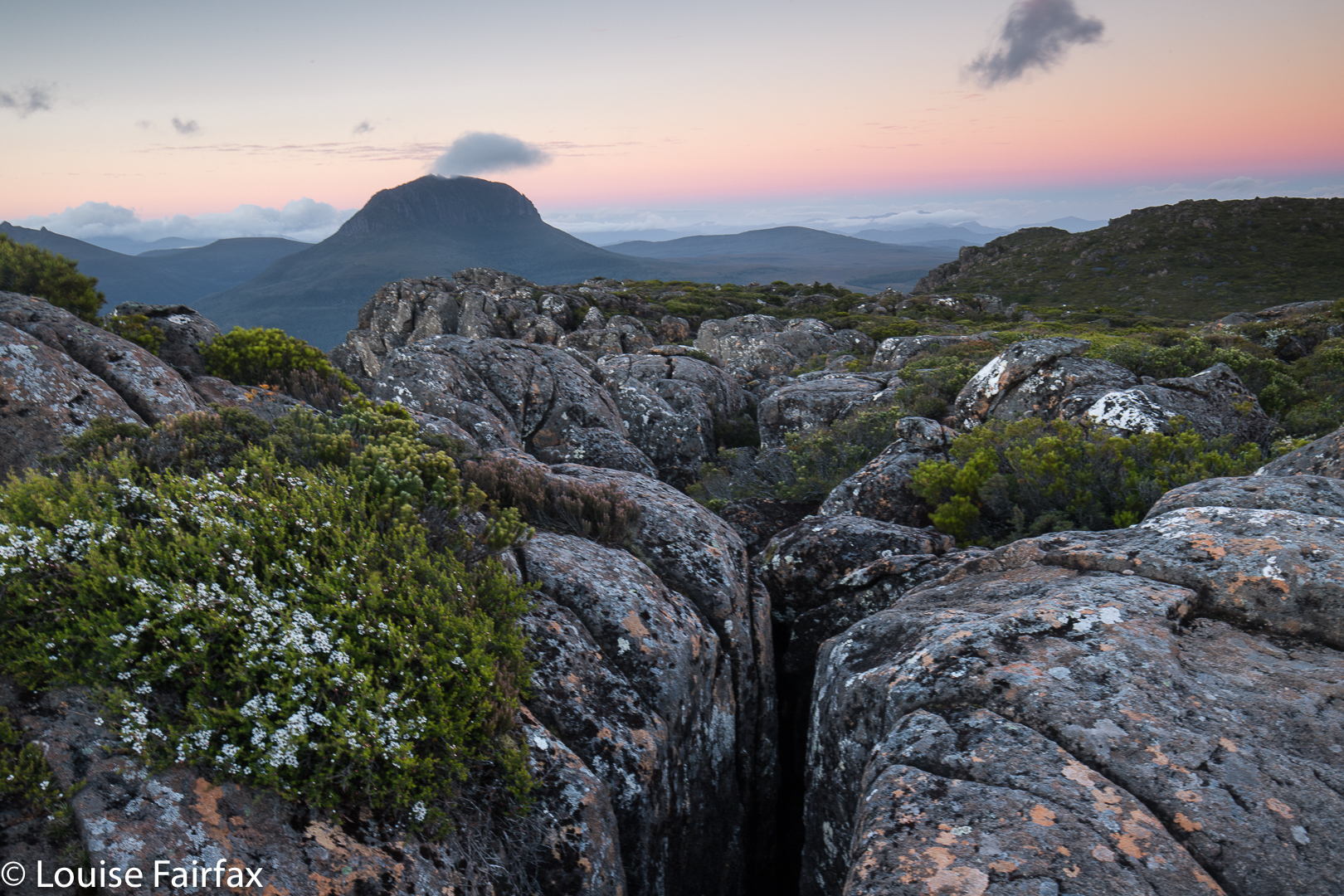 Her voice became a bit more anxious when she realised that I had not camped up here before, and that I didn’t have a clue whether we would find a spot, as I don’t know anyone who has ever camped there. “What happens if there’s nowhere to camp?”, she enquired. “Then we come back down,” I replied, which was not, I presume, good news when you are already very tired, but that is always my plan.
Her voice became a bit more anxious when she realised that I had not camped up here before, and that I didn’t have a clue whether we would find a spot, as I don’t know anyone who has ever camped there. “What happens if there’s nowhere to camp?”, she enquired. “Then we come back down,” I replied, which was not, I presume, good news when you are already very tired, but that is always my plan.
“What is there’s no water on top?”
“Then I come back down to collect it for both of us.” That answer was more welcome. “That’s why I keep pointing out sources of water when we pass them, as I am timing how long from the last seen water to the top in case I do have to do that. And I have never yet failed to find some way of pitching two tents on top. One just has to be creative.”
That sounded good, but there does surely, have to be a first time when there is absolutely nothing. I didn’t add that.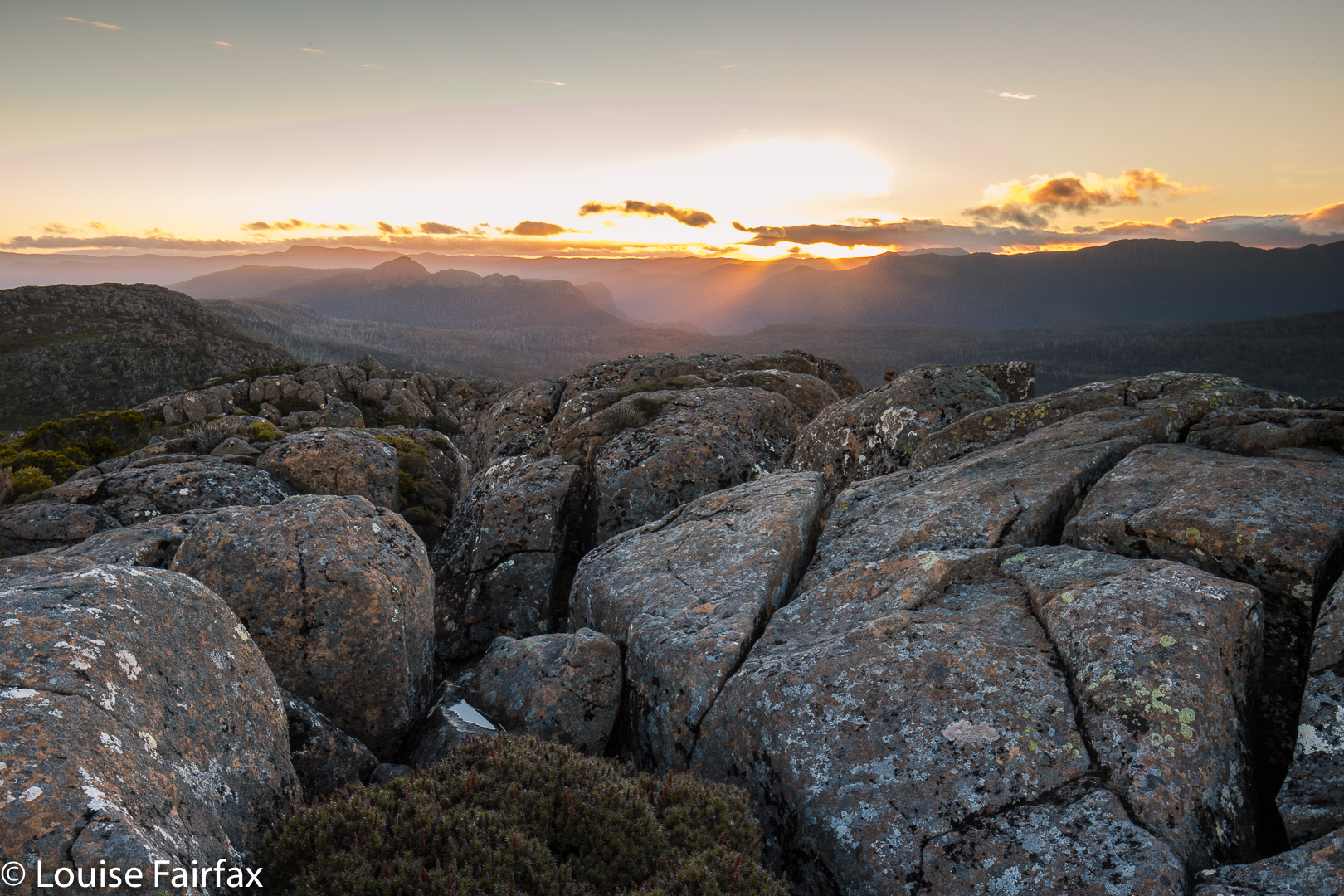 The conditions for pitching up there were not exactly five-star quality, and my friend quite justifiably wanted to be near me for security, so we were looking for flat ground for two that did not exist. We found the best available real estate, which would not have sold for much as it was merely a patch of bush where the scrub was not too prickly or tall. We threw our tents over the bushes, pinning the corners to the ground, and somehow managed to get a quarter decent pitch that would stay up all night. Both of us had tent floors that followed an artistic wave pattern. I actually found my wave quite comfy, as it was at least soft, and one of the ups acted as a pillow.
The conditions for pitching up there were not exactly five-star quality, and my friend quite justifiably wanted to be near me for security, so we were looking for flat ground for two that did not exist. We found the best available real estate, which would not have sold for much as it was merely a patch of bush where the scrub was not too prickly or tall. We threw our tents over the bushes, pinning the corners to the ground, and somehow managed to get a quarter decent pitch that would stay up all night. Both of us had tent floors that followed an artistic wave pattern. I actually found my wave quite comfy, as it was at least soft, and one of the ups acted as a pillow.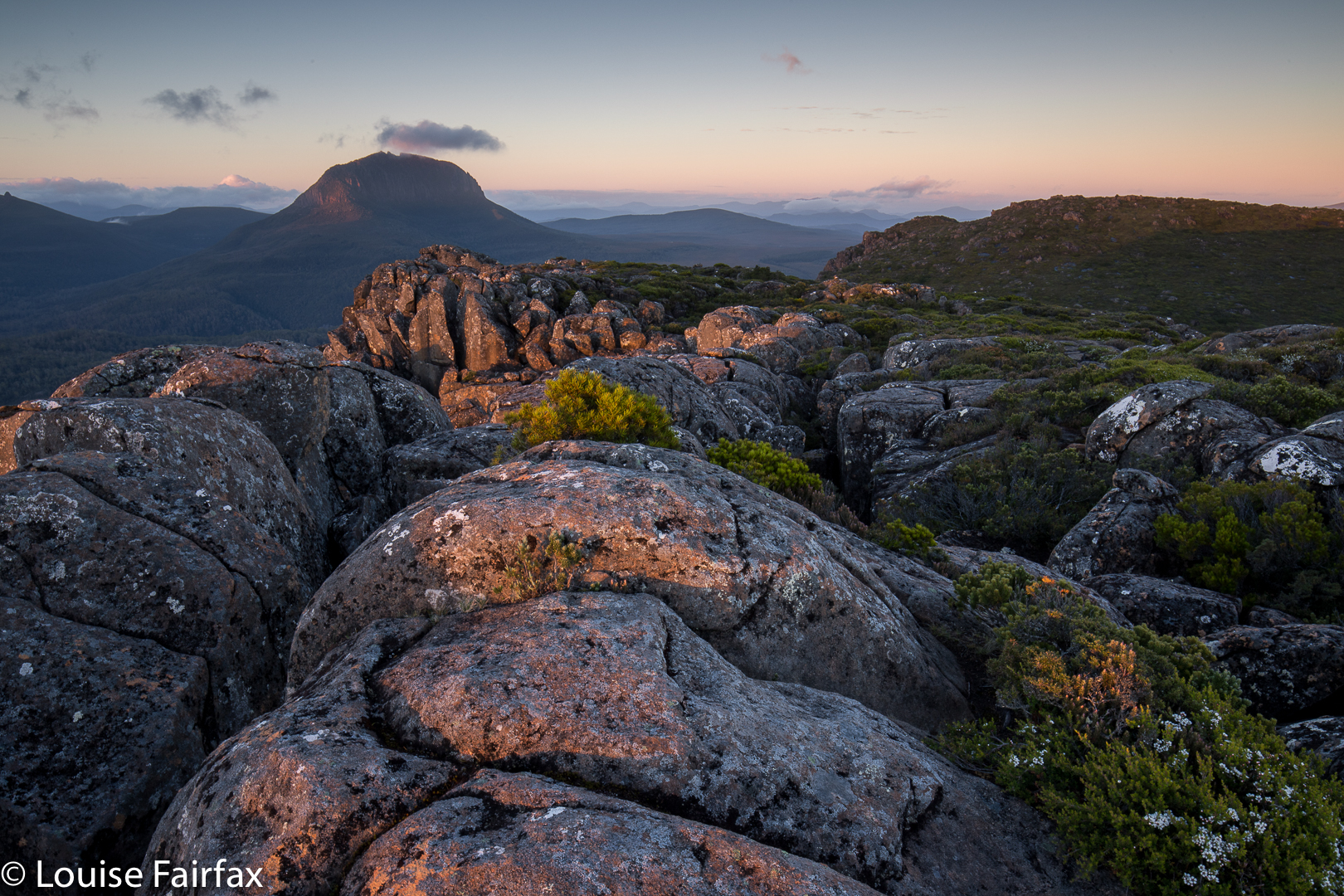 It was almost a relief that sunset was a fizzer, as we both had truly frozen feet, and the only thing either of us could think of was the joy of taking off wet boots and socks and getting into a dry sleeping bag. If anything good happened to the mountains out there at dusk, we don’t know about it.
It was almost a relief that sunset was a fizzer, as we both had truly frozen feet, and the only thing either of us could think of was the joy of taking off wet boots and socks and getting into a dry sleeping bag. If anything good happened to the mountains out there at dusk, we don’t know about it.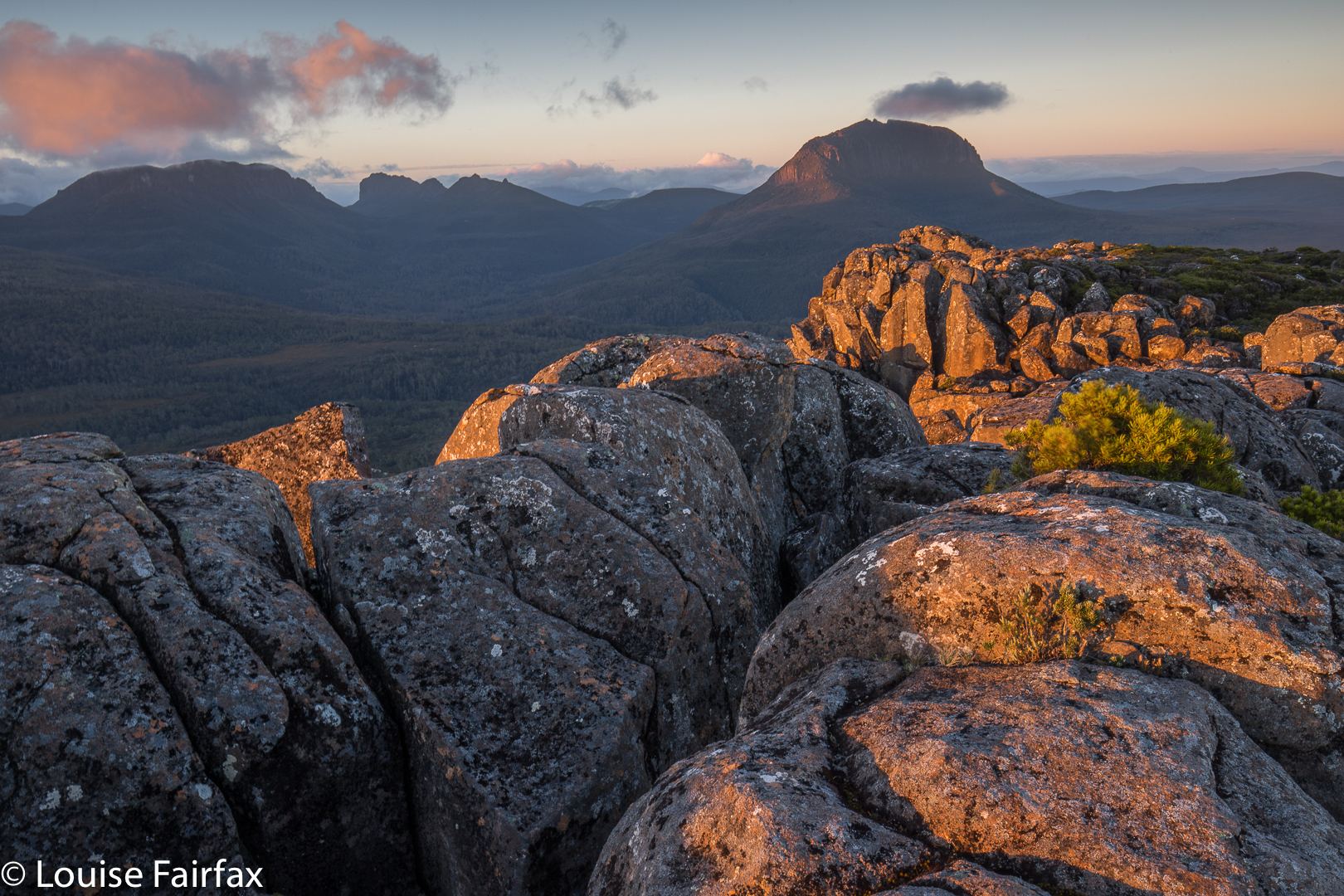 The wind flapped our tents all night. Neither of us got any substantial sleep, so the alarms for sunrise at 5.15 were not exactly welcome. I poked my head out. “Na. No colour. I’m ‘sleeping’ for another 20.”
The wind flapped our tents all night. Neither of us got any substantial sleep, so the alarms for sunrise at 5.15 were not exactly welcome. I poked my head out. “Na. No colour. I’m ‘sleeping’ for another 20.”
At 5.35 there was a tiny hint of pink, so I felt obliged to go out and see if anything nice could happen. It did, and we were both happy with our results. Now that she had survived her first night out, and on a mountain at that, my friend was very happy. We both walked well on the return journey, and were back at the car before midday, keen for our next adventure. I learned that after a night like that, I should have cappuccino before driving the solo section. I fell asleep at the wheel a mere kilometre from home. Luckily, I was fighting sleep so hard that I was only doing about 35 kms/hr just in case, and, more luckily, there was no oncoming traffic, as my steering swerved me to the right of the road once I dropped off. It is very, very unnerving to do this. You have the insane belief that if you fight sleep, you can win. I am still in a bit of shock, even though no harm came of it.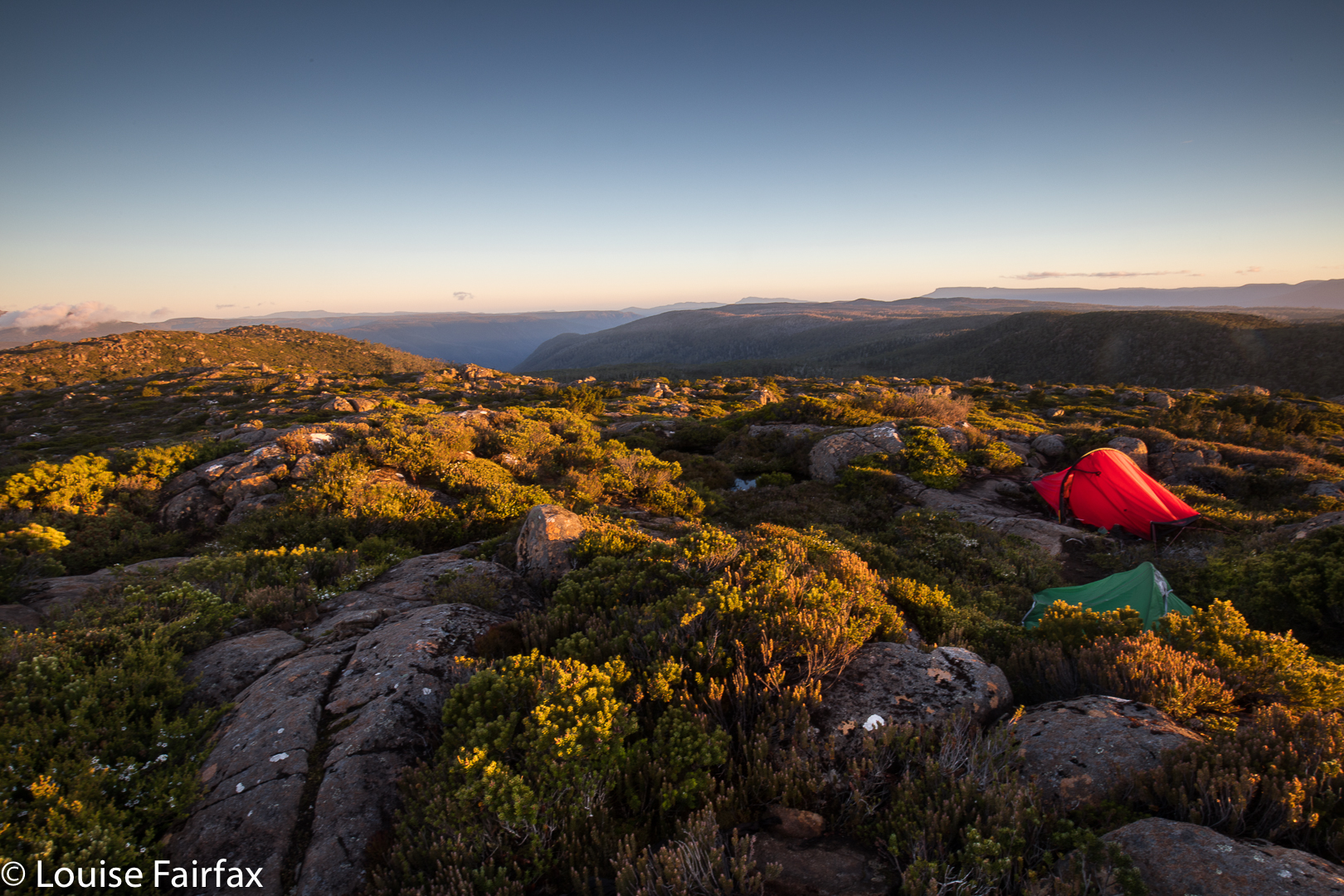 Another sad theory that was tested this weekend was the one told to me by Telstra, namely, that 000 would work anywhere, as it uses a different wavelength. I got a flat tyre on the drive in, and needed RACT. There was no reception. 000 did not work. You are no doubt laughing at a stupid, stereotypical woman who can’t change a tyre. I know what to do, but there are a few problems: (i) I am not strong enough to pull the spare tyre out of its hole (ii) I cannot push the spanner to undo the nuts. I stood on it. Nothing happened. I jumped on it. Nothing (I weighed 43 kgs when I checked at Christmas [before the pudding ha ha]). I went to the very edge to get maximum leverage, and only then could I begin to budge it whilst jumping on it. The insurmountable problem, however, is that if I did somehow get the old wheel off, there is no way on this earth that I could lift the new wheel into place. Luckily, a good samaritan (well, two) happened to drive up (Ashley and Noelene), and they helped me, whilst instructing me at the same time, but realised along with me that if alone, I would not be capable of getting out of this fix, and the problem that 000 does not actually work all over Tasmania is rather daunting. There are places where one could starve hoping for a good samaritan to drive nearby.
Another sad theory that was tested this weekend was the one told to me by Telstra, namely, that 000 would work anywhere, as it uses a different wavelength. I got a flat tyre on the drive in, and needed RACT. There was no reception. 000 did not work. You are no doubt laughing at a stupid, stereotypical woman who can’t change a tyre. I know what to do, but there are a few problems: (i) I am not strong enough to pull the spare tyre out of its hole (ii) I cannot push the spanner to undo the nuts. I stood on it. Nothing happened. I jumped on it. Nothing (I weighed 43 kgs when I checked at Christmas [before the pudding ha ha]). I went to the very edge to get maximum leverage, and only then could I begin to budge it whilst jumping on it. The insurmountable problem, however, is that if I did somehow get the old wheel off, there is no way on this earth that I could lift the new wheel into place. Luckily, a good samaritan (well, two) happened to drive up (Ashley and Noelene), and they helped me, whilst instructing me at the same time, but realised along with me that if alone, I would not be capable of getting out of this fix, and the problem that 000 does not actually work all over Tasmania is rather daunting. There are places where one could starve hoping for a good samaritan to drive nearby.
